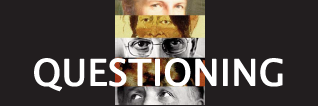|
SOCIAL FUNCTIONS OF THE FOUR RESEARCH ARTS AREAS OF ACTIVITY |

|
Researching - into how we live and how we want to live together. One of the social functions of RESEARCH ARTS involves developing socially relevant heuristics and innovation. This is the knowledge generated by inter- and trans-disciplinary cooperative processes. This kind of research project requires the translation or transfer of knowledge, the exchange between research practices in all fields of knowledge, and, above all, an openness for non-disciplinary knowledge and unpredictable influences. Other relevant artistic and scientific cooperation processes can be observed in the development of the "third scientific method", for instance in research with simulation models.
The term heuristic in relation to the field of Research Arts is based on Larry Laudans’ definition of it being seen “as a problem and its corresponding problem-solving”. Furthermore, the term includes here the proposed definition by Hans Vaihinger of the "heuristic fiction". The focus of the "heuristic fiction" is the boundary of a scientifically defined nature inherent in some research practices, for example, in relation to the verification by artists of research results. "Heuristic fiction" refers to the social benefits and advantages of such research: even when assuming false, fictitious or unprovable parameters, they can identify important new areas of research. RESEARCH ARTS aims to contribute to the diversity of methods by formulating hypotheses, examining technologies for their level of sustainability or developing new methods of activity or company practices.
to the contents >> |

|
Translating - between manifold languages of science, multiple perceptions of reality, the diverse concepts of value and worth, and different forms of memory.
The social function of translation and memory, within the artistic and scientific system, is based on the coexistence of different forms of memory. The parallel development of different perceptions of reality - such as non-overlapping analysis of reality - creates the need for translation models and comparison methods. Furthermore, it involves the circulation of knowledge through new forms of communication and archive models, which need to be continually updated and expanded. In this context, RESEARCH ARTS studies, for example, the structural transformation of collective social memory, like a cabinet of curiosities accumulating a "collection" of research objects…. taking stock of the systematized archives of knowledge such as libraries as well as the many new possibilities provided by the dynamic memory of networked databases.
The comparison methods of the RESEARCH ARTS field of study allows one to clarify and resolve problems relating to the communication of knowledge by making use of metaphoric principles such as resemblance or analogy. Comparison fields are generated, which precede the research and are necessary to identify the conditions and possible difficulties associated with the new or unfamiliar. Skills in such a translation practice are acquired by attempting to approach uncertainties, paradoxes, blind spots, ignorance, strangeness, etc. through the generation of hypothetical models. These models again and again refresh what the memory of a system includes and excludes. Making use of these hypothetical models, for instance with the help of similarity, equivalence and analogy structures, the possibilities of the connectivity of a system can be renewed and tested.
to the contents >> |

|
Questioning - the world we live in and the way we want to participate in shaping this world. The social function of the RESEARCH ARTS fields of questioning refers to the observation, self-observation and self-criticism of different social systems (Niklas Luhmann). The capability of this function relies on being able to distinguish between different forms of observation and setting them in relation to each other: 1. observations that establishes a direct relationship with the world without distinguishing between object and subject (first-order observation), 2. observations based on the observation of the observer - for example, public opinion regarding science or scientific reviews (second-order observation), and 3. the observation of the self-observing researcher (third-order observation).
Self-observation in science takes place, for example, in dealing with publications. These publications may have different goals, such as obtaining support for an idea or the attempt to deflect criticism, as heuristics (in order to create new methods or knowledge) or as criticism (to contextualize the conditions of production). Another example of self-observation is the artist seen as a "uninvolved and critical commentator". The criticism then develops from the "hetero-observation" of another system: the artist can for example question the conditions or the socio-political contexts in which science is produced. In this way, the social impact, user behavior or the social uses or misuses of scientific results are questioned.
to the contents >> |

|
Cooperating - to encourage creative participatory processes between "experts from different disciplines" and the “experts of everyday knowledge". The social function of the RESEARCH ARTS field of “cooperating”, deals with the theory of action, with socially involved artistic & scientific practices and science communication. The theory of action is appropriate in the way it deals with the result of certain actions: the effect of symbolic acts, such as a staged rescue attempt, which may have a limited social impact, or such as the real act of direct action, which may lead to irreversible social consequences. The aim of RESEARCH ARTS in this area is to grasp the potential or demonstrable effects that artistic-scientific cooperation projects have on society.
The RESEARCH ARTS field of “cooperating” also searches for sensible methods of participatory engagement and communication. This approach also tries to develop these exemplary academic & artistic practices further by transferring them to other contexts, such as into a political context. In a political context, it is committed to rethink normative formats of democratic participation and to increase involvement in issues of social responsibility. Another facet of this form of action is the development and testing of new formats of participation within the “shared space” of the city or in scientific contexts such as in science museums.
to the contents >> |
|
|
|
|